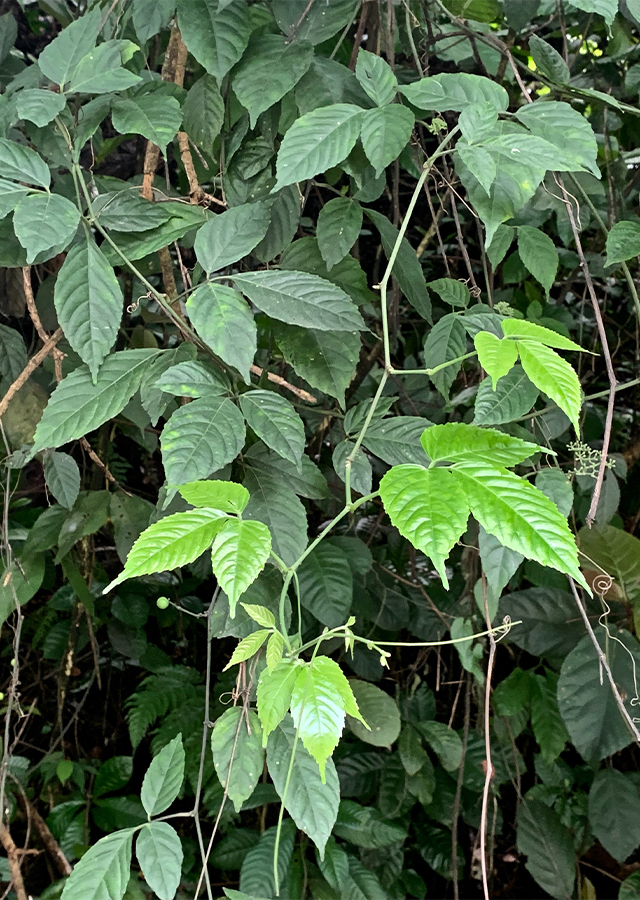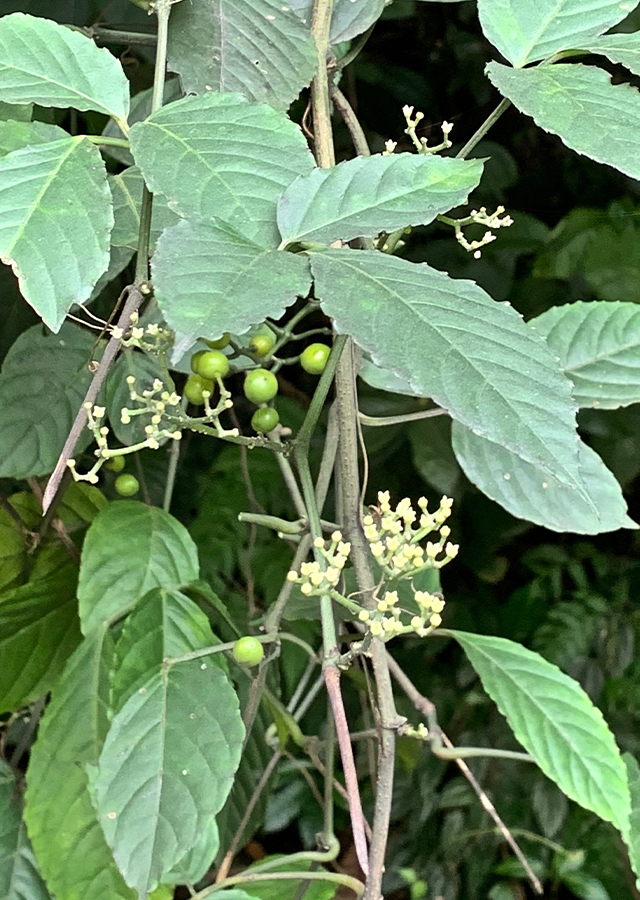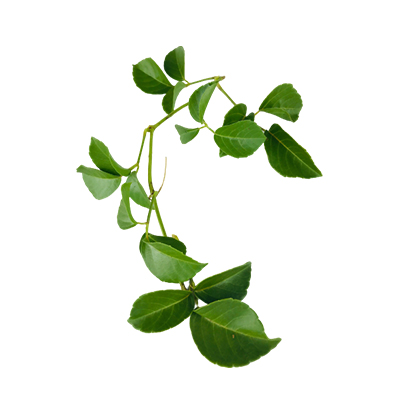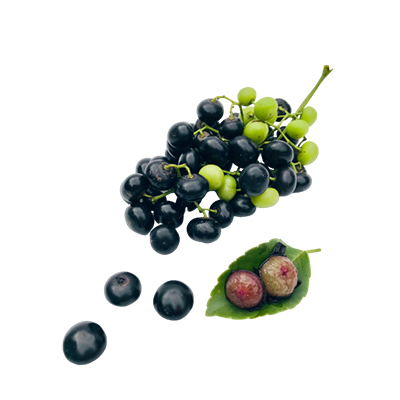Fox Grape
Causonis trifolia (L.) Mabb. & J.Wen
Vitaceae
Location in our garden
Principal



Synonym
Cayratia carnosa (Lam.) Gagnep.
Cayratia trifolia (L.) Domin
Cissus carnosa Lam.
Habitus
Climbers. A deciduous climbing shrub with stems, grow up to 2 -20 m long
Part Used
Leaves
Seeds
Roots
Stem
Growing Requirements
Full Sunshine
Habitat
Riverbanks
Forest
Overview
Fox grape is native to India, Asia and Australia. It is found throughout the hills in India. The plant is harvested from the wild for local use as medicine and sometimes as food. The leaves are often used in scrubbing livestock animals such as cows and goats (as shampoo).
Vernacular Names
Amal-bel (India), Fuchs-traube (German), Kalit-kalit (Tagalog-Philippines), Gou jiao ji (Chinese).
Agroecology
It grows in thickets and forests on hillsides or by streams, on rocks; at elevations up to 500-1,000 m. Prefers full sun and has a moderated water need, moist, well-drained, fertile loamy soils.
Morphology
- Roots - produces a tuberous rootstock.
- Stems - woody at base, more or less succulent, compressed and densely climbs into the surrounding vegetation, attaching itself by means of tendrils that end in adhesive disks.
- Leaves - trifoliated with 2-3 cm long petioles and ovate to oblong-ovate leaflets, 2-8-cm long, 1.5-5-cm wide, pointed at the tip.
- Flowers - small greenish white and brown in color, 2.5 mm big on solitary cymes in leaf axils.
- Fruits - fleshy, juicy, dark purple or black, nearly spherical, about 1 cm in diameter.
- Seeds - triangular, apex rounded, ventral holes and ribs obtuse along margin, slightly raised.
Cultivation
- Propagation is done by stem cuttings or seeds.
- Seeds are taken between 1 and 3 months to germinate.
Chemical Constituents
Steroids/terpenoids, flavonoids, tannins, stilbenes, kaempferol, myricetin, quercetin, triterpene, epifriedelanol, hydrocyanic acid, delphinidin, β-sitosterol, squalene, stigmasterol, lutein.
Traditional Medicinal Uses
Medicinal Uses
- Studies have shown that it can be used in the treatment of bacterial infections, fungal infections, infections caused by parasites (protozoa) and low blood sugar.
- The bark extract shows the antiviral, antibacterial, antiprotozoal, hypoglycemic, anticancer and diuretic activity.
Traditional Uses
- The leaves and roots are astringent and are used as a treatment for fever. They are commonly used for poulticing ulcers of the nose.
- A decoction of the leaves, or the juice of the fresh leaves, is considered to be antiscorbutic.
- The heated leaves are applied as a poultice on boils in order to relieve inflammation.
- The juice of the leaves, combined with the juice of young pineapple, is used on the head as a treatment for itch and dandruff.
- Infusion of seeds along with extract of tubers is traditionally given orally to diabetic patients to check blood sugar level.
- Paste of tuberous is applied on the affected part in the treatment of snake bite.
Part Used
Reference Sources
- Fern, Ken. (2014). Useful Tropical Plants, Cayratia trifolia, http://tropical.theferns.info/viewtropical.php?id=Cayratia+trifolia. 18-09-2020.
- Kumar, D., Kumar, S., and et all. (2011). A review on chemical and biological properties of Cayratia trifolia Linn. (Vitaceae). http://www.phcogrev.com/sites/default/files/PhcogRev-5-10-184.pdf. 16-01-2021.
- National Center for Biotechnology Information. (2011). A review on chemical and biological properties of Cayratiatrifolia Linn. (Vitaceae), https://www.ncbi.nlm.nih.gov/pmc/articles/PMC3263053/ . 22-09-2020.
- Parks Board, Cayratia trifolia,. (No date). https://www.nparks.gov.sg/florafaunaweb/flora/5/1/5148. 24-09-2020.
- StuartXchange. (2016). Philippine Medicinal Plants. Kalit-kalit. http://www.stuartxchange.com/Kalit-kalit. 16-02-2021.



